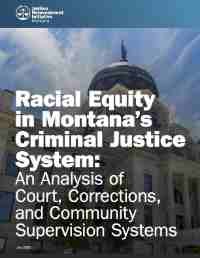by Lois M. Davis, Louis T. Mariano, Melissa M. Labriola, Susan Turner, Andy Bogart, Matt Strawn, Lynn A. Karoly
he California County Resentencing Pilot Program was established to support and evaluate a collaborative approach to exercising prosecutorial discretion in resentencing eligible incarcerated individuals. Nine California counties were selected and were provided funding to implement the three-year pilot program. Participants in the pilot include a county district attorney (DA) office and a county public defender (PD) office and may include a community-based organization in each county pilot site. The evaluation seeks to determine how the pilot is implemented in individual counties, whether the pilot is effective in reducing criminal justice involvement (e.g., time spent in incarceration and recidivism), and whether it is cost-effective.
This report documents evaluation results, focusing on the implementation of the program from September 2022 through July 2023 — the second year of the pilot program. In addition to providing a review of the pilot program and evaluation methods, the authors describe year 2 findings based on stakeholder interviews and analysis of pilot data. Qualitative interviews revealed key strengths and challenges of the pilot in its implementation. Analyses of quantitative data describe the population of individuals considered for resentencing and document the flow of cases from initial consideration through resentencing. These findings shed light on the experiences of the nine counties in implementing the pilot program during year 2.
Key Findings
Interviews with DA and PD offices indicated overall support for the program but faced key challenges
The PDs tended to want to play a more proactive role in defining eligibility criteria, identifying cases for consideration, and making recommendations to the courts than what the DAs envisioned.
Personnel shortages were mentioned by multiple offices as a continuing challenge.
Only four of the counties were working with a community-based organization.
The pilot counties each developed their own criteria for identifying cases eligible for resentencing consideration
Although the inclusion criteria varied somewhat across the pilot counties, overall the criteria focused on such factors as the age of the incarcerated individual, the crime committed, and the length and other details of the sentence.
Counties indicated use of less strict criteria in this second year of implementation and were embracing flexibility in the cases they were reviewing.
Analysis of case-level data covering the first 18 months of pilot implementation revealed important data points
Among the 684 case reviews initiated during the reporting period, 105 cases had been referred to the court for resentencing, the DA offices had decided not to refer 321, and 258 were still under DA review.
Of 94 cases for which courts have ruled on a resentencing motion, 91 cases have resulted in resentencing. Of the 91 resentenced individuals, 63 have been released from prison.
Among those cases awaiting a DA decision on whether to proceed with resentencing, 72 percent have been under review more than six months.
Santa Monica, CA: RAND, 2023. 95p.






